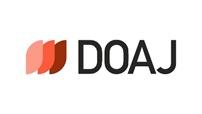Abstract
This study probes the effect of loyalty program on the customer retention based on the real transaction data(n=2,892) acquired from education service industry. We try to figure out the outcomes of reward program through more than 1 year-long data gathered and analyzed according to quasi-experimental design(i.e., before and after design). We adopt this kinds of research scheme in regard that previous studies measured the effect of loyalty program by dividing the customers into two group(i.e., members vs. non-members) after the firms or stores had started the program. We believe that it might not avoid the self-selection bias. The research questions of this study could be explained such as: First, most research said that the loyalty programs could increase the customer loyalty and contribute to the sustainable growth of company. But there are little confirmation that this promotional tool could be justified in terms of financial perspective. Thus, we are interested in both the retention rate and financial outcomes caused by the introduction of loyalty programs. Second, reward programs target mainly current customer. Especially CRM(customer relationship management) said that it is more profitable for company to build positive relationship with current customer instead of pursuing new customer. And it claims that reward program is excellent means to achieve this goal. For this purpose, we check in this study whether there is a interaction effect between loyalty program and customer type in retaining customer. Third, it is said that dis-satisfied customers are more likely to leave the company than satisfied customers. While, Bolton, Kannan and Bramlett(2000) claimed that reward program could contribute to minimize the effect of negative service by building emotional link with customer, it is not empirically confirmed. This point of view explained that the loyalty programs might work as exit barrier to current customer. Thus, this study tries to identify whether there is a interaction effect between loyalty program and service experience in keeping customer. To achieve this purpose, this study adopt both Kaplan-Meier survival analysis and Cox proportional hazard model. The research outcomes show that the average retention period is 179 days before introducing loyalty program but it is increased to 227 days after reward is given to the customers. Since this difference is statistically significant, it could be said that H1 is supported. In addition, the contribution margin coming from increased transaction period is bigger than the cost for administering loyalty programs. To address other research questions, we probe the interaction effect between loyalty program and other factors(i.e., customer type and service experience) affecting it. The analysis of Cox proportional hazard model said that the current customer is more likely to engage in building relationship with company compared to new customer. In addition, retention rate of satisfied customer is significantly increased in relation to dis-satisfied customer. Interestingly, the transaction period of dis-satisfied customer is notably increased after introducing loyalty programs. Thus, it could be said that H2, H3, and H4 are also supported. In summary, we found that the loyalty programs have values as a promotional tool in forming positive relationship with customer and building exit barrier.
Recommended Citation
Jeon, Ho Seong
(2011)
"고객보상 프로그램이 고객 유지에 미치는 효과,"
Asia Marketing Journal: Vol. 13
:
Iss.
3
, Article 2.
Available at: https://doi.org/10.53728/2765-6500.1286
Creative Commons License

This work is licensed under a Creative Commons Attribution 4.0 License.





